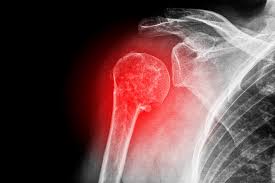
Dislocation
A dislocation happens when a bone is forced out of its normal position in a joint—think of it like a door hinge popping out of alignment. It’s a painful and often dramatic injury that can affect any joint, but the most commonly dislocated ones are the shoulder, fingers, elbows, knees, and hips.
What causes it?
- Falls or sports injuries (especially contact sports)
- Car accidents
- Sudden twists or impacts to a joint
Symptoms
- Intense pain
- Swelling and bruising
- Deformity—the joint may look visibly out of place
- Inability to move the joint
- Numbness or tingling if nerves are affected
Treatment
- Do not try to pop it back in yourself! That can cause more damage.
- Immobilise the joint and seek emergency care.
- A doctor may perform a reduction (repositioning of the bone), followed by:
- Immobilisation with a splint or sling
- Pain relief
- Rehabilitation to restore strength and mobility
Once a joint has been dislocated, it’s more prone to future dislocations, especially if the surrounding ligaments or tendons were stretched or torn.
Sprain
A sprain is when a ligament—the tough, stretchy band that connects bones at a joint—is stretched or torn, usually due to a sudden twist, fall, or impact. It’s one of those injuries that can sneak up on you during sports, a misstep on stairs, or even just landing awkwardly.
Common symptoms:
- Pain around the joint
- Swelling and bruising
- Limited movement or stiffness
- A “pop” sound or sensation at the time of injury
- Difficulty bearing weight (especially with ankle or knee sprains)
First aid: Think P.R.I.C.E.
- Protection – Support the joint (brace, splint, or avoid using it)
- Rest – Stop activity and avoid putting weight on it
- Ice – Apply for 10–15 minutes every 2–3 hours for the first 48 hours
- Compression – Use an elastic bandage to reduce swelling
- Elevation – Raise the injured area above heart level
When to seek help:
- If the pain is severe or worsening
- If you can’t move or put weight on the joint
- If swelling or bruising is intense
- If it’s not improving after a few days of self-care
Sprains are often confused with strains (which affect muscles or tendons), but the treatment is similar.
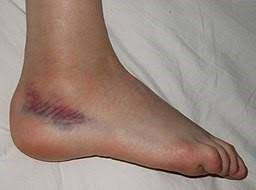
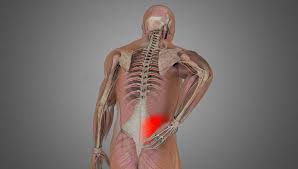
Strain
A strain is an injury that affects muscles or tendons—the tough cords that connect muscles to bones. It happens when these tissues are overstretched or torn, usually from sudden movement, overuse, or lifting something the wrong way.
Common causes:
- Lifting heavy objects without proper form
- Sudden twisting or pulling motions
- Overexertion during sports or exercise
- Slipping or falling awkwardly
Symptoms:
- Pain and tenderness in the affected area
- Swelling or bruising
- Muscle spasms or cramping
- Limited movement or weakness
First aid: Think P.R.I.C.E.
- Protection – Avoid further strain; use support if needed
- Rest – Give the muscle time to heal
- Ice – Apply for 10–15 minutes every 2–3 hours
- Compression – Use a bandage to reduce swelling
- Elevation – Raise the area to help drain fluid
Most mild strains heal within a few weeks, but severe ones may need physiotherapy or even surgery.
When using ice, wrap the ice pack in a cloth, and apply for 10- 15 minutes, allow skin to return to feeling warm, then repeat use of ice.
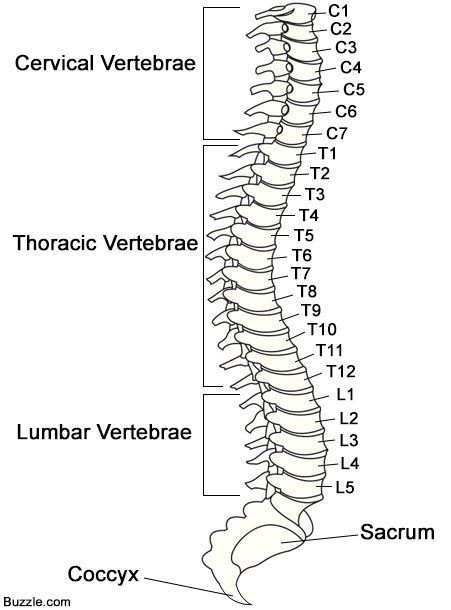
Spinal Injury
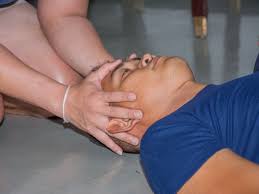
A spinal injury refers to damage to the spinal cord or the bones, tissues, and nerves surrounding it. It can be life-altering, depending on the severity and location of the injury.
Types of Spinal Injuries
- Complete: No sensation or movement below the injury site.
- Incomplete: Some function remains, like partial movement or feeling.
- Paraplegia: Affects the lower body (legs and pelvic organs).
- Tetraplegia (Quadriplegia): Affects all four limbs and the torso.
Common Causes
- Trauma: Car accidents, falls, sports injuries, or violence.
- Non-traumatic: Tumours, infections, inflammation, or degenerative diseases like arthritis.
Symptoms
- Loss of movement or sensation
- Pain or pressure in the neck/back
- Difficulty breathing or coughing
- Loss of bladder or bowel control
- Muscle spasms or exaggerated reflexes
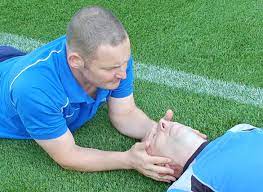
Treatment of Suspected Spinal Injury
If you suspect someone has a spinal injury, the golden rule is: don’t move them unless necessary. Movement can worsen the injury and potentially cause permanent damage. Here’s what to do:
- Call emergency services immediately – Dial 999 and explain the situation clearly.
- Keep them still – Tell the person not to move. If they’re conscious, reassure them and encourage them to stay calm and still.
- Stabilise the head and neck – Gently hold their head in line with the spine using both hands. Keep it in a neutral position—don’t tilt or turn it.
- Prevent movement – If possible, place rolled-up towels or clothing on either side of the head to keep it steady.
- Do not remove helmets – If they’re wearing one (e.g. motorbike or sports helmet), leave it on unless it’s blocking their airway.
- If they’re unresponsive and not breathing, open the airway using the jaw thrust technique (not head-tilt-chin-lift), and begin CPR if necessary.
- Monitor breathing and responsiveness – Stay with them and keep checking until help arrives.
Even if the person seems okay, never assume it’s minor—spinal injuries can be deceptive. Want to go over how to perform the jaw thrust safely or how to manage this in a remote location?
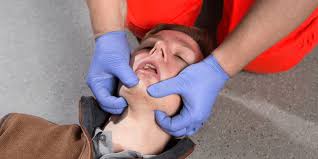
The Jaw Thrust
The jaw thrust is a first aid technique used to open a person’s airway, especially when a spinal injury is suspected, and you want to avoid moving the neck. It’s a go-to move in trauma situations. Here’s how to do it safely:
Step-by-step: Jaw Thrust Manoeuvre
- Position yourself at the top of the person’s head (ideal if they’re lying on their back).
- Place your hands on either side of their head.
- Locate the angles of the jaw—that’s the bony part just below the ears.
- Use your index and middle fingers to gently push the lower jaw upward and forward.
- Stabilise the head by resting your thumbs on the person’s cheeks or temples—do not tilt the head.
- Look, listen, and feel for breathing. If the airway is still blocked, be ready to assist further (e.g. with rescue breaths or CPR if trained).
This technique lifts the tongue away from the back of the throat, helping the casualty breathe effectively.
